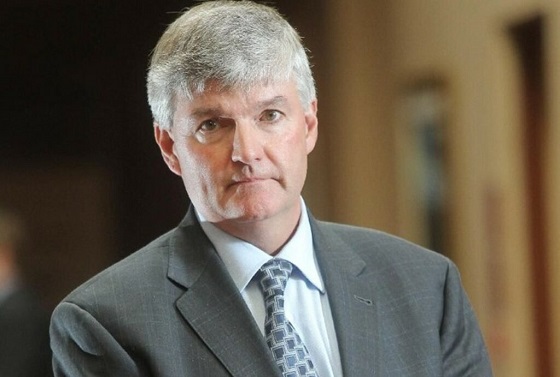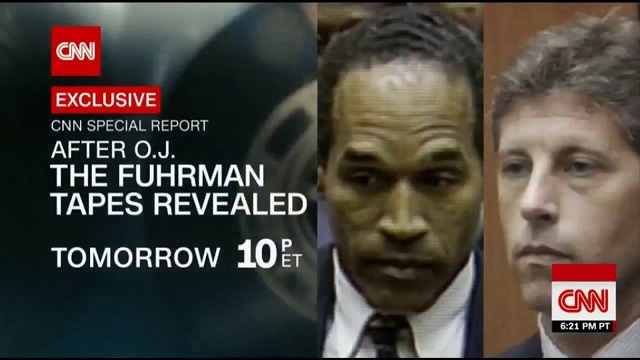Opinion
The 3Rs are very important, when it’s convenient, when it’s trendy…….
Reduce, Reuse, Recycle, the 3Rs is popular among people and is tossed out there, often, in the news. When it comes to plastic bottles, bags and straws but not when it comes to cars and neighbourhoods, for example.
There are a lot of small cars out there and most often it is an economic decision, but not always. You go to any parking lot, even those in front of discount stores and you will see many new, very large vehicles. The 3Rs do not seem to apply to our vehicles, apparently.
Our neighbourhoods offer another example. We all seem to be clamouring for newer, bigger homes in new neighbourhoods. When I was growing up it was normal to see a family of six living in houses of a 1,000 square feet. Now a family of six is rare but houses of 1000 square feet is rarer, and even rarer still is a family of six living in a 1000 square foot house.
The 3Rs comes into play when you hit retirement and it is usually a health or an economic decision.
Why do we march on Parliament Hill to stop using plastic straws and piping oil if we insist on bigger houses and bigger cars?
History says that we are building on the best agricultural land as we expand our cities with new neighbourhoods. I do not think reducing our arable land or reusing or recycling our farmland into residential neighbourhoods and industrial parks is in the goal of the 3Rs philosophy.
It seems to me that we pave over 1000s of acres of farmland to build newer homes every year, but we are worked up over how many plastic straws hit our waste management sites.
Every city has older run down neighbourhoods, ignored or avoided by homebuyers and politicians. Often times they become rentals or the first step on the property ladder, seldom thought about in the 3Rs scheme of things. Focusing on appearances and not on the potential it often easier to build or buy new houses in new neighbourhoods.
I live in an older neighbourhood, a mid century home, with deer visiting my yard. I have a view of trees and a short walk to the creek. I also have decade old cracks in my sidewalk, a shrub growing in my street. The neighbour’s house sold recently but it was a hard sell and it went for less than it was bought for almost 10 years ago. A realtor mentioned that people want new, modern homes inside mid-century houses. They see antiques and character as simply old.
So the politicians are only following the wishes of the populace when they abandon the 3Rs, pave over farmland to make room for new homes, new roads and new conveniences.
Are we only environmentalists when it is convenient and only in trends?
I do not wish to live in a cave, but I think that there is a sense of disproportionate importance in our lives that needs addressing.
Maybe the answer is paving new roads out of used plastic bags and straws, and building new houses out of bricks made of compacted trash. Maybe, and this may be unrealistic, we could just reduce the number of neighbourhoods, recycle our old houses and reuse abandoned schools.
Just a thought.
Energy
Canada Has All the Elements to be a Winner in Global Energy — Now Let’s Do It

Mike Rose is Chair, President and CEO of Tourmaline Oil Corp.
From EnergyNow.ca
By Mike Rose of Tourmaline Oil Corp.
There has never been a more urgent time to aggressively develop Canada’s massive resource wealth
There has never been a more urgent time to aggressively develop Canada’s massive resource wealth. An increasingly competitive world is organizing into new alliances that are threatening our traditional Western democracies.
Weaker or underperforming countries may be left behind economically and, in some cases, their sovereignty may be compromised. We cannot let either scenario happen to Canada.
Looking inward, our country has posted among the weakest economic growth of all G20 nations over the past decade — we are at real risk of delivering a materially diminished standard of living to our children and subsequent future generations.
Canada is blessed with one of the largest and most diverse natural resource endowments in the world. It’s not just oil and gas; it’s uranium, precious metals, rare earth elements, enormous renewable forests, a vast fertile agricultural land base and, of course, the single-largest freshwater reserve on the planet.
This is nothing new; Canada has been regarded as a resource-extraction economy for a long time, but over the past two decades we’ve been slowing down and finding reasons to not advance new projects. While looking ahead to an exciting new future economy is enticing, the majority of our easily accessible resource wealth remains largely untapped. Our Canadian resource sectors are the most capital-efficient, technologically advanced and environmentally responsible in the world. We’ve got the winning combination.
Canada has among the largest, lowest-cost natural gas reserves in the world — we’re already the fourth-largest producer. With consistent regulatory support, we can rapidly evolve into a leader in the growing global LNG business.
This country produces among the lowest-emission natural gas in the world and technology adaptation is widening the gap. A 10 bcf/day Canadian LNG industry targeted to displace coal-fired electrical generation in Asia would offset the vast majority of emissions from the entire domestic oil and gas industry. Contemplating a cap on the Canadian natural gas industry is actually damaging to the global environment, as growing demand will be met by jurisdictions with higher associated emissions.
As developed economies look at electrification to accelerate emissions reduction, nuclear power is becoming increasingly attractive. Canada is already one of the largest uranium producers in the world and has long possessed one of the most efficient and safest reactor designs. This is an advantage we created for ourselves several decades ago; it’s time to harvest this opportunity.
The rare earth elements required for a growing solar industry and battery requirements associated with electrification are abundant in certain regions in Canada — for example, a large new mining opportunity is emerging in Ontario. We should make that happen. One of the great outcomes of accelerating our multi-sector resource opportunity is that the economic benefits will be enjoyed across the country; all Canadians will share in it.
The Canadian agricultural industry has been long regarded as a world leader in efficiency, yield and technical innovation. Global food security and affordability are rapidly emerging issues, and Canada has a role to play here, as well. Not only could we make it more attractive for Canadian producers to grow output and explore novel new transportation corridors to feed more of the world, we have a large, well-established, globally competitive fertilizer industry.
There are many more future resource wealth opportunities we could be capitalizing on. The list is as long as the imagination of our well-educated and entrepreneurial resource sector workforce.
Enormous amounts of capital are required for these projects, and that global capital is most certainly available. These pools of capital will flow into Canada if we demonstrate a willingness to consistently support the Canadian resource sector at provincial and federal government levels.
Accelerating domestic multi-sector resource development provides solutions to many of the problems currently facing Canada. We’ll be playing to strengths that we have established and evolved over many decades. We are the most efficient and technologically advanced in the full spectrum of resource development. Adoption and innovative adaptation of the continuous march of technology advancements will only make us better.
To paraphrase: We can take advantage of what’s between our ears to do an even better job of developing what’s beneath our feet.
Mike Rose is Chair, President and CEO of Tourmaline Oil Corp.
In an ongoing monthly series presented by the Calgary Herald and Financial Post, Canadian business leaders share their thoughts on the country’s economic challenges and opportunities.
Alberta
Coutts Three verdict: A warning to protestors who act as liaison with police

From the Frontier Centre for Public Policy
By Ray McGinnis
During the trial numbers of RCMP officers conceded that the Coutts Three were helpful in their interactions with the law. As well, there didn’t seem to be any truth to the suggestion that Van Huigenbos, Van Herk and Janzen were leaders of the protest.
Twelve jurors have found the Coutts Three guilty of mischief over $5,000 at a courthouse in Lethbridge, Alberta. Marco Van Huigenbois, Alex Van Herk and George Janzen will appear again in court on July 22 for sentencing.
Van Huigenbois, Van Herk and Janzen were each protesting at the Coutts Blockade in 2022. A blockade of Alberta Highway 4 began on January 29, 2022, blocking traffic, on and off, on Alberta Highway 4 near the Coutts-Sweetgrass Canada-USA border crossing. The protests were in support of the Freedom Convoy protests in Ottawa.
Protests began due to the vaccine mandates for truckers entering Canada, and lockdowns that bankrupted 120,000 small businesses. Government edicts were purportedly for “public health” to stop the spread of the C-19 virus. Yet the CDC’s Dr. Rachel Wallensky admitted on CNN in August 2021 the vaccine did not prevent infection or stop transmission.
By February 2022, a US court forced Pfizer to release its “Cumulative Analysis of Post-Authorization Adverse Event Reports” revealing the company knew by the end of February, 2021, that 1,223 people had a “case outcome” of “fatal” as a result of taking the companies’ vaccine.
On the day of February 14, 2022, the three men spoke to Coutts protesters after a cache of weapons had been displayed by the RCMP. These were in connection with the arrest of the Coutts Four. Van Huigenbos and others persuaded the protesters to leave Coutts, which they did by February 15, 2022.
During the trial numbers of RCMP officers conceded that the Coutts Three were helpful in their interactions with the law. As well, there didn’t seem to be any truth to the suggestion that Van Huigenbos, Van Herk and Janzen were leaders of the protest.
RCMP officer Greg Tulloch testified that there were a number of “factions” within the larger protest group. These factions had strong disagreements about how to proceed with the protest. The Crown contended the Coutts Three were the leaders of the protest.
During his testimony, Tulloch recalled how Van Huigenbos and Janzen assisted him in getting past the “vehicle blockade to enter Coutts at a time during the protest when access to Coutts from the north via the AB-4 highway was blocked.” Tulloch also testified that Janzen and Van Huigenbos helped with handling RCMP negotiations with the protesters. Tulloch gave credit to these two “being able to help move vehicles at times to open lanes on the AB-4 highway to facilitate the flow of traffic in both directions.”
During cross examination by George Janzen’s lawyer, Alan Honner, Tulloch stated that he noticed two of the defendants assisting RCMP with reopening the highway in both directions. Honner said in summary, “[Marco Van Huigenbos and George Janzen] didn’t close the road, they opened it.”
Mark Wielgosz, an RCMP officer for over twenty years, worked as a liaison between law enforcement and protesters at the Coutts blockade. Taking the stand, he concurred that there was sharp disagreement among the Coutts protesters and the path forward with their demonstration. Rebel News video clips “submitted by both the Crown and defence teams captured these disagreements as demonstrators congregated in the Smuggler’s Saloon, a location where many of the protesters met to discuss and debate their demonstration.” Wielgosz made several attempts to name the leaders of the protest in his role as a RCMP liaison with the protesters, but was unsuccessful.”
However, the Crown maintained that the protest unlawfully obstructed people’s access to property on Highway 4.
Canada’s Criminal Code defines mischief as follows in Section 430:
Every one commits mischief who willfully
(a) destroys or damages property;
(b) renders property dangerous, useless, inoperative or ineffective;
(c) obstructs, interrupts or interferes with the lawful use, enjoyment or operation of property; or
(d) obstructs, interrupts or interferes with any person in the lawful use, enjoyment or operation of property.
Robert Kraychik reported that “RCMP Superintendent Gordon Corbett…cried (no comment on the sincerity of this emoting) while testifying about a female RCMP officer that was startled by the movement of a tractor with a large blade during the Coutts blockade/protest.” This was the climax of the trial. A tractor moving some distance away from an officer in rural Alberta, with blades. The shock of it all.
No evidence was presented in the trial that Van Huigenbos, Van Herk and Janzen destroyed or damaged property. Officers testified they couldn’t identify who the protest leaders were. They testified the defendants assisted with opening traffic lanes, and winding down the protest.
By volunteering to liaise with the RCMP, the Crown depicted the Coutts Three as the protest leaders. Who will choose to volunteer at any future peaceful, non-violent, protest to act as a liaison with the policing authorities? Knowing of the verdict handed down on April 16, 2024, in Lethbridge?
Ray McGinnis is a Senior Fellow with the Frontier Centre for Public Policy. His forthcoming book is Unjustified: The Emergencies Act and the Inquiry that Got It Wrong.
-

 Economy2 days ago
Economy2 days agoExtreme Weather and Climate Change
-

 International2 days ago
International2 days agoTelegram founder tells Tucker Carlson that US intel agents tried to spy on user messages
-

 Crime1 day ago
Crime1 day agoCanadian receives one-year jail sentence, lifetime firearms ban for setting church on fire
-

 International1 day ago
International1 day agoGerman parliament passes law allowing minors to change their legal gender once a year
-

 Business2 days ago
Business2 days agoNew capital gains hike won’t work as claimed but will harm the economy
-

 Bruce Dowbiggin2 days ago
Bruce Dowbiggin2 days agoWhy Are Canadian Mayors So Far Left And Out Of Touch?
-

 Fraser Institute2 days ago
Fraser Institute2 days agoPowerful players count on corruption of ideal carbon tax
-

 Business2 days ago
Business2 days agoCanada’s economy has stagnated despite Ottawa’s spin







